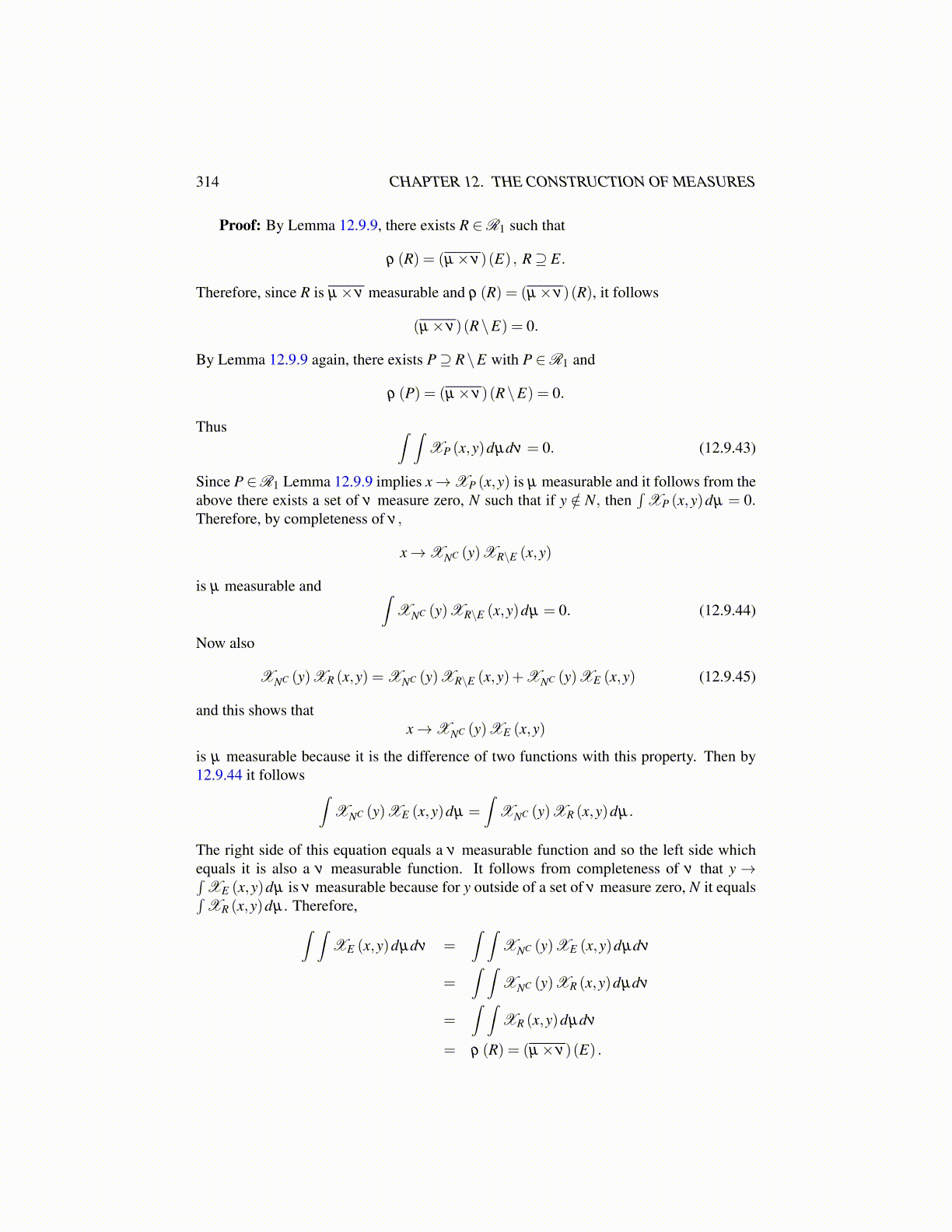
314 CHAPTER 12. THE CONSTRUCTION OF MEASURES
Proof: By Lemma 12.9.9, there exists R ∈R1 such that
ρ (R) = (µ×ν)(E) , R⊇ E.
Therefore, since R is µ×ν measurable and ρ (R) = (µ×ν)(R), it follows
(µ×ν)(R\E) = 0.
By Lemma 12.9.9 again, there exists P⊇ R\E with P ∈R1 and
ρ (P) = (µ×ν)(R\E) = 0.
Thus ∫ ∫XP (x,y)dµdν = 0. (12.9.43)
Since P ∈R1 Lemma 12.9.9 implies x→XP (x,y) is µ measurable and it follows from theabove there exists a set of ν measure zero, N such that if y /∈ N, then
∫XP (x,y)dµ = 0.
Therefore, by completeness of ν ,
x→XNC (y)XR\E (x,y)
is µ measurable and ∫XNC (y)XR\E (x,y)dµ = 0. (12.9.44)
Now also
XNC (y)XR (x,y) = XNC (y)XR\E (x,y)+XNC (y)XE (x,y) (12.9.45)
and this shows thatx→XNC (y)XE (x,y)
is µ measurable because it is the difference of two functions with this property. Then by12.9.44 it follows ∫
XNC (y)XE (x,y)dµ =∫
XNC (y)XR (x,y)dµ.
The right side of this equation equals a ν measurable function and so the left side whichequals it is also a ν measurable function. It follows from completeness of ν that y→∫
XE (x,y)dµ is ν measurable because for y outside of a set of ν measure zero, N it equals∫XR (x,y)dµ . Therefore,∫ ∫
XE (x,y)dµdν =∫ ∫
XNC (y)XE (x,y)dµdν
=∫ ∫
XNC (y)XR (x,y)dµdν
=∫ ∫
XR (x,y)dµdν
= ρ (R) = (µ×ν)(E) .